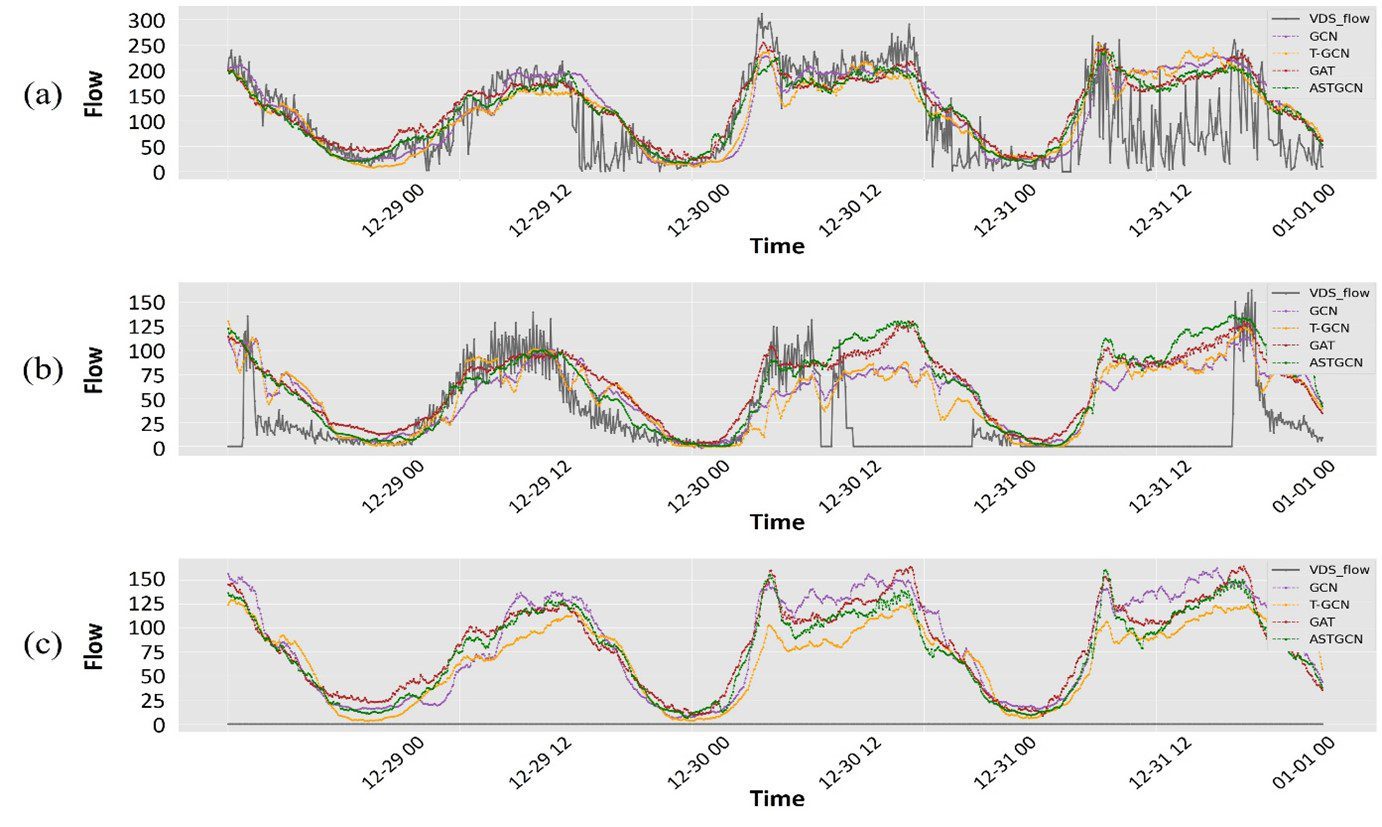Traffic volume imputation based on multi-source data collection system
- Traffic detectors collect traffic data to understand the flow of traffic on a city scale, which can help build an efficient traffic management system or deliver useful traffic information to road users for better decision-making.
- However, various types of missing data occur depending on the data management system and unexpected situations on the road. In the short term, we found that the gaps were hourly, but in the long term, they were monthly.
- We propose a deep learning methodology based on a graph neural network that can simultaneously interpolate the missing values of a large amount of traffic detector data installed at the city level.
- By applying an attention mechanism in the graph domain to cooperatively consider the spatial and temporal correlation of two different types of detectors, the model recovers the original traffic data with an error of less than 12 cars/5 minutes, regardless of the missing data rate.



→ The overall multi-source data aggregation process and imputation procedure
A deep spatio-temporal approach in maritime accident prediction
– Predicting the risk of maritime accidents is crucial for improving traffic surveillance and marine safety.
- This study aims at investigating the application of deep learning in both short- and long-term predictions of different types of accident risks associated with small vessels by considering multiple influencing factors.
- The results reveal that although the performance of the proposed deep spatiotemporal ocean accident prediction (DSTOAP) model varies according to grid sizes and time intervals, its accuracy (more than 78%) makes it reliable for predicting accidents.
- Furthermore, although all types of accidents are captured with high accuracy, more than 84% of collision accidents can be predicted accurately.

→ The proposed DSTOAP architecture and prediction results for each grid size

Comments are closed.